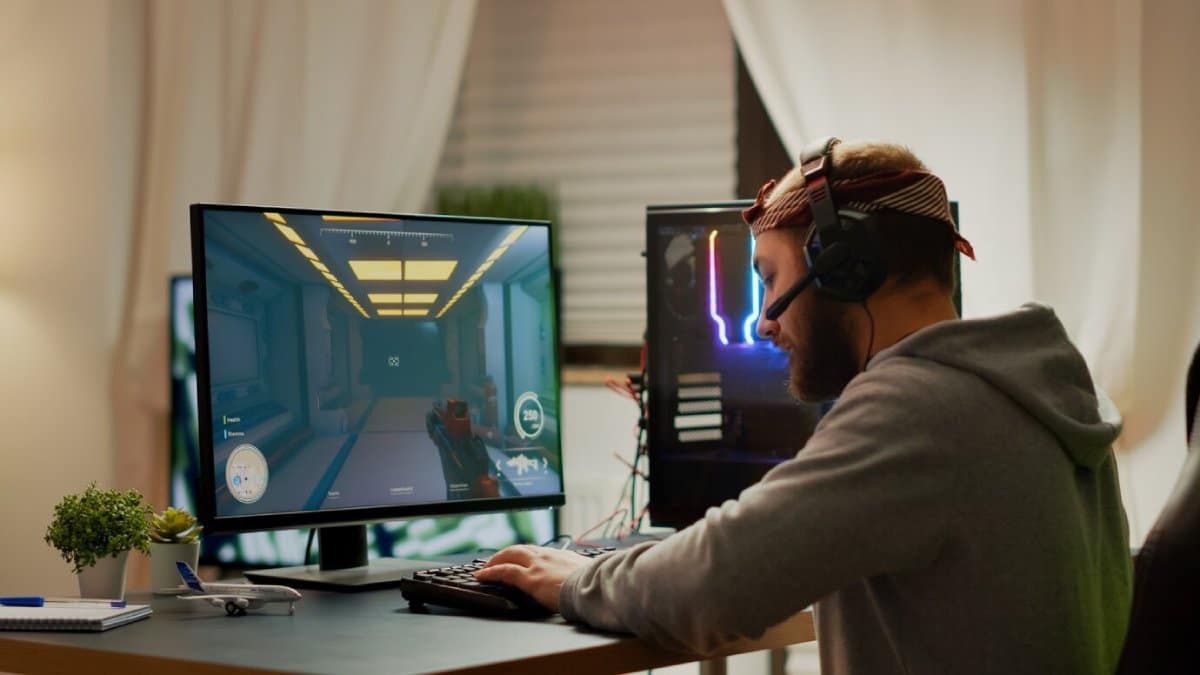
How Developers Are Making FPS Games More Accessible
Recently, the gaming industry has improved inclusivity. Now, players from all backgrounds can enjoy their favourite games. First-person shooters (FPS) lead the way among different genres. As we look towards 2025, it’s clear that accessibility in FPS games is more than just a trend; it’s a necessity. But how exactly are developers making these games more accessible? Let’s jump into accessible shooters and see how they’re changing gaming for the better.
The Importance of Accessibility in Gaming
Picture yourself as a dedicated gamer, but you hit walls that stop you from fully enjoying the game. For many, this has been a reality. Accessibility in gaming goes beyond just adding features. It focuses on breaking down barriers and fostering an inclusive environment. With FPS games being one of the most popular genres, ensuring they are accessible to all is crucial. But why does this matter so much?

Why Accessibility in FPS Games Matters
Accessibility in FPS games lets everyone join in, no matter their physical abilities. This expands the player base and adds diverse viewpoints to the gaming community. A diverse audience brings better feedback. It also offers varied in-game experiences and encourages more inclusive design thinking.
Additionally, accessible games can lead to better player retention. When players feel included and valued, they are more likely to stay. They invest more in the game, both emotionally and financially. Players who engage more are likely to recommend the game. This helps the community grow.
Reaching more people can also greatly increase sales and improve reputation. Companies are now prioritizing corporate social responsibility, so inclusive gaming is crucial in game development.
Real-Life Applications and Data-Backed Insights
Look at the success of games like “The Last of Us Part II.” It got a lot of praise for its accessibility features. The game set a new standard for accessibility. It did this by adding options like customisable controls and visual aids. Developers wrote detailed guides and tutorials. These resources help users understand and use the features well.
A 2020 report from the Entertainment Software Association shows that almost 46% of gamers in the UK have a disability. This statistic highlights why games should be accessible. It shows that the market developers can reach by focusing on inclusivity. A 2023 survey found that over 60% of players with disabilities said accessible features affected their buying choices. This shows that accessibility is becoming more critical.
Key Innovations in FPS Game Accessibility
So, how are developers making FPS games more accessible? Let’s explore some of the key innovations that are transforming the gaming landscape.
Customisable Controls and Interfaces
A big step forward in FPS accessibility is customisable controls and interfaces. Developers let players change control schemes, so everyone can play comfortably. This includes remapping buttons, adjusting sensitivity, and toggling holds versus toggles. Developers also add voice commands for players with limited mobility.
Some developers are taking it a step further. They enable UI scaling. This lets players change the size of menus, subtitles, and HUDs. It lowers visual strain. This helps players with vision problems or cognitive processing differences.
Visual and Auditory Aids
For players with visual or hearing impairments, traditional FPS games can be challenging. Recent innovations offer high-contrast modes, text-to-speech options, and audio cues. These tools enhance the gaming experience for players.
Games like “Call of Duty” and “Apex Legends” use directional audio indicators. They also vary enemy footsteps by pitch or rhythm. This helps players grasp spatial dynamics, even without visuals. Closed captions are changing. They now include not only dialogue but also environmental sounds. You might immediately see captions like [footsteps approaching] or [gunfire distant].
Colorblind modes now go beyond basic presets. They have advanced sliders and real-time previews, which let players adjust the game’s visuals for their specific color vision needs.
Assistive Technologies and Adaptive Equipment
Assistive technologies are helping players with disabilities enjoy FPS games like never before. Adaptive controllers, like the Xbox Adaptive Controller, have changed the game. They let players customise their gaming setups to fit their needs.
More tools and devices, such as eye-tracking tech, foot pedals, and one-handed keyboards, now work great with popular games. Some titles even offer compatibility with Tobii Eye Tracker or Logitech adaptive devices.
These hardware solutions and in-game accessibility settings help players enjoy fast-paced FPS games.
Additional Expert Tips & Common Mistakes to Avoid
The gaming industry has dramatically improved accessibility, but there’s still more to do. Here are some expert tips and common mistakes developers should be aware of:
Best Practices for Developers
- Reach Out to the Community: Developers should get feedback from players with disabilities. This helps them understand what these players need. This can be achieved through forums, surveys, and playtesting sessions. Games that are tested with accessibility advocates before launch often have better inclusive features.
- Begin with Accessibility: Adding accessibility features early in game development makes integration easier and helps avoid expensive redesigns later. Core engine features work more reliably and scale better with future updates.
- Train Development Teams: Developers should train their teams on best practices for accessibility. This helps create inclusive games. Internal guidelines, accessibility leads, and certification tools all help keep projects consistent.
Common Mistakes to Avoid
- Keep It Simple: Advanced features are essential, but developers must prioritise easy and intuitive design. Hiding accessibility features in complex menus can discourage players. It’s essential to make these options easy to find and use.
- Ignoring Feedback: If you don’t act on gamer feedback, you may miss chances to improve. Developers should listen to players and make changes based on their input. They can use feedback to improve the game.
- Neglecting Regular Updates: Accessibility features need regular updates. They should improve with new technology and player feedback. What works at launch may need changes later. This can happen as hardware improves or player needs shift.
Advanced Insights and Expert Recommendations
What insights can developers use to improve FPS game accessibility in the future?
Embracing AI and Machine Learning
AI and machine learning can significantly improve game accessibility. AI can analyse player behaviour to suggest personalised accessibility settings, resulting in a unique gaming experience for each player.
Some games now use AI to adjust difficulty. These systems respond to how fast a player reacts, their success rate, or their movement patterns. They can change challenges while keeping user control. They offer optional notifications and transparency settings.

Collaborating with Accessibility Advocates
Partnering with accessibility advocates and organisations provides key insights into players with disabilities. By working together, developers can create more comprehensive and practical accessibility features.
Game studios like Naughty Dog, Ubisoft, and Microsoft now have teams that focus on accessibility. These teams often work with advocacy groups or consultants with personal experience.
Investing in Research and Development
Continuous research and development are crucial for staying ahead in the accessibility game. Investing in R&D lets developers discover new tech and ideas. This can improve everyone’s gaming experience.
New areas such as haptic feedback for direction, gaze tracking, and emotion-based changes are promising. Studios that embrace innovation will likely lead the next wave of inclusive game design.
Conclusion: The Path Forward for FPS Game Accessibility
As we approach 2025, accessibility in FPS games is crucial. Focusing on inclusivity helps developers create a friendlier gaming space and allows them to reach more players. The innovations and strategies discussed in this blog are just the beginning. FPS games are growing fast, and they focus on being inclusive. The future looks bright.
So, what can you do to support this movement? Join the gaming community, share your thoughts with developers, and support inclusive practices. Together, we can ensure that gaming remains a space for everyone.


